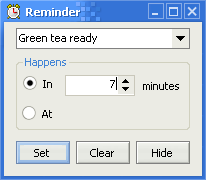Estimating JSON size
- 📅
- 📝 990 words
- 🕙 5 minutes
- 📦 .NET
- 🏷️ JSON, C#
- 💬 2 responses
I've been working on a system that heavily uses message queuing (RabbitMQ via MassTransit specifically) and occasionally the system needs to deal with large object graphs that need to be processed different - either broken into smaller pieces of work or serialized to an external source and a pointer put into the message instead.
The first idea was to serialize all messages to a MemoryStream but unfortunately this has some limitations, specifically:
 This great book shows you the process, thinking and code behind the open-source .NET IDE SharpDevelop that went on to branch into MonoDevelop.
This great book shows you the process, thinking and code behind the open-source .NET IDE SharpDevelop that went on to branch into MonoDevelop. DiffMerge has a clear interface and supports for file-type specific rule-sets that allow you to decide how to deal with white-space, line-endings, encoding etc.
DiffMerge has a clear interface and supports for file-type specific rule-sets that allow you to decide how to deal with white-space, line-endings, encoding etc. Yesterday I predicted the ability to run XNA code on our Xbox 360’s today.
Yesterday I predicted the ability to run XNA code on our Xbox 360’s today. Whether it’s a meeting for a specific time or remembering to stop the tea brewing in 7 minutes time (lovely tea from Adagio Teas that deserves it’s own blog post) events often whiz by without me noticing. I’m not great at time based background threading… but a computer is.
Whether it’s a meeting for a specific time or remembering to stop the tea brewing in 7 minutes time (lovely tea from Adagio Teas that deserves it’s own blog post) events often whiz by without me noticing. I’m not great at time based background threading… but a computer is.